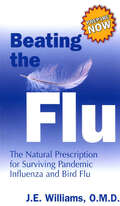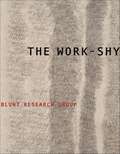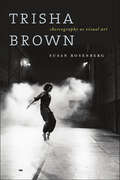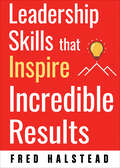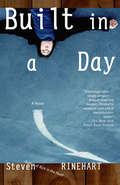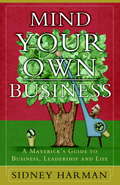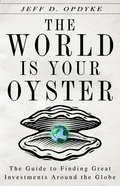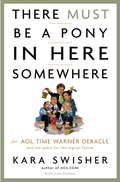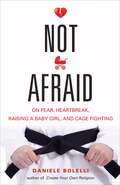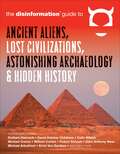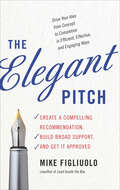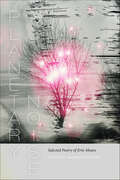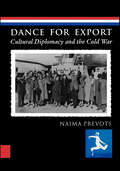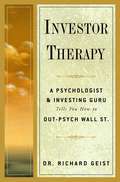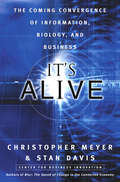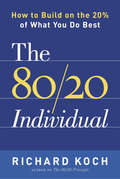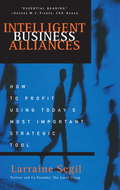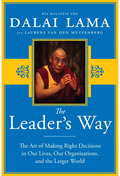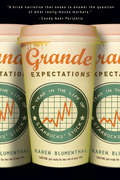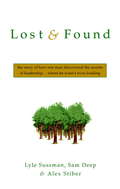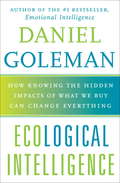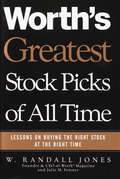- Table View
- List View
Beating the Flu: The Natural Prescription for Surviving Pandemic Influenza and Bird Flu
by J. E. Williams“Strong medicine! . . . Dr. Williams offers real-world options in the realm of natural and food-based therapies.” —Ron Klatz, MD, DO, President of the American Academy of Anti-Aging Medicine, and author of Infection ProtectionBe Prepared to Beat the Flu!Every year, 36,000 Americans die of the flu and one million die worldwide. The possibility of a super flu pandemic is frightening. If no one has immunity, it could cover the globe in 250 days and conceivably infect twenty percent or more of the world’s population of 6.6 billion. The 1918 Spanish flu killed 675,000 Americans and at least fifty million worldwide. The death toll from the bird flu virus—with a 50% kill rate in adults and a frightening 89% in children—could reach an apocalyptic 360 million. Worse yet, without a vaccine (or adequate supplies), and without enough antiviral drugs, modern medicine doesn’t have a specific, effective, and safe treatment for the flu. This nightmare scenario may not happen, but if it does, it’s essential that individuals and families arm themselves with up-to-date information.Dr. J. E. Williams is an oriental and natural-medicine expert who has used herbs and vitamins to treat influenza and other viruses for more than two decades. In Beating the Flu, he begins not by telling you how to treat the flu bug, but how to avoid it altogether through a combination of good hygiene and super foods that offer the quick boosts your immune system needs to ward off the virus. Should you get sick, Dr. Williams also offers a “natural medicine cabinet” of vitamins, herbs, and minerals that work best against any kind of flu—along with the clinical evidence to back up the remedies.
The Work-Shy (Wesleyan Poetry Series)
by Blunt Research GroupThe Work-Shy painstakingly reconstructs a chorus of voices rescued from hermetic "colonies" and fragile communes, from worlds that work in ways that defy work as we know it. Its poetic assemblages offer direct testimony from the first youth prison in California and from asylums for the chronically insane (preserved in the Prinzhorn Collection in Germany and the Creedmoor Psychiatric Center in New York City). Painful facts emerge about "sterilization mills" in California, where thousands of individuals became subject to compulsory procedures (policies that shaped eugenics practice in the Third Reich). In addition, the poems "translate" asylum texts—the writing of the insane—into a wider field of social conflict and utopian fragments of not-yet-being.Activating what Susan Howe calls "the telepathy of the archive" (and Peter Gizzi dubs "archeophonics" in the title of his latest collection), the poems of The Work-Shy become part of a "book of listening," occupying identities rooted in the demimonde and in places of confinement. Voices echo to form a ragged chain of soliloquies, kenning and keening, riddles and rants. Published under the collective, anonymous signature of the BLUNT RESEARCH GROUP, the book operates at the crossroads of lyric and documentary poetries, of singularity and collectivism. An online readers companion will be available at bluntresearchgroup.site.wesleyan.edu.
Trisha Brown: Choreography as Visual Art
by Susan RosenbergTrisha Brown re-shaped the landscape of modern dance with her game-changing and boundary-defying choreography and visual art. Art historian Susan Rosenberg draws on Brown's archives, as well as interviews with Brown and her colleagues, to track Brown's deliberate evolutionary trajectory through the first half of her decades-long career. Brown has created over 100 dances, six operas, one ballet, and a significant body of graphic works. This book discusses the formation of Brown's systemic artistic principles, and provides close readings of the works that Brown created for non-traditional and art world settings in relation to the first body of works she created for the proscenium stage. Highlighting the cognitive-kinesthetic complexity that defines the making, performing and watching of these dances, Rosenberg uncovers the importance of composer John Cage's ideas and methods to understand Brown's contributions. One of the most important and influential artists of our time, Brown was the first woman choreographer to receive the coveted MacArthur Foundation Fellowship "Genius Award."
Leadership Skills that Inspire Incredible Results
by Fred HalsteadWhat do leaders and executives do to keep improving their performances and maintain momentum? They go back to the basics. Fundamentals are the glue—communicating, listening, questioning, inspiring followers, being accountable, and delegating. These essentials are the change agents for leaders with a desire to succeed.In Leadership Skills That Inspire Incredible Results Halstead gives readers the same advice, guidance, and techniques he offers his clients. He outlines the skills needed to be an effective leader and provides techniques augmented by real-world examples from companies that include Spotify, Clif Bar & Company, Honeywell, and Eileen Fisher. Learn how to: •Hone others' critical thinking through insightful powerful questions•Inspire followers•Fearlessly delegate with mindful purpose•Create a culture of accountabilityReaders will see how the development of these skills demonstrates respect for others that will inspire them to tackle goals and produce results previously thought impossible. It shows professionals at all levels how to improve these skills to create greater success for them, their team, and their entire organization.
Built in a Day: A Novel
by Steven RinehartAcclaimed author of the story collection Kick in the Head Steven Rinehart’s debut novel is filled to the brim with his characteristic wry humor, unflinching truth, and raw emotional power.Built in a Day is the story of an over-educated underachiever whose oath to clean up his act is put to the ultimate test when the world around him crumbles into a state of disrepair. Left in charge of his late wife’s son and a sultry 15-year-old pregnant orphan named Jule, 32-year-old Andrew Bergman has to find the will and strength to rise to the absurd challenge of becoming a stepfather and -grandfather in the course of a few short months. Darkly hysterical and deeply stirring, Built in a Day is an affecting examination of love, responsibility, and the resilience it takes to pick up the pieces.
Mind Your Own Business: A Maverick's Guide to Business, Leadership and Life
by Sidney Harman“The maverick’s way of conducting business forswears the leader as commanding general; it rejects the practice of top-down, authoritative command. Rather, it proposes the leader as catalyst, conscience, and inspirer . . . The true leader sees his job as setting an environment in which new ideas can emerge that neither he nor any other individual anticipated. That leap of imagination, that moment of genuine creativity, can only be inspired by a leader who encourages exploration and shows a willingness to consider a totally new approach.” --from Mind Your Own BusinessThe corporate misdeeds of self-serving executives during the high-octane economy of the 1990s have forced many people to rethink the qualities that make a strong leader. For sixty years, Sidney Harman, the chairman and CEO of the world’s premier manufacturer of high-end audio equipment, has stood apart from the crowd, building his business the old-fashioned way, by satisfying customers and, in doing so, making a healthy profit. His refreshingly employee-centric, bottoms-up approach to business is the secret of Harman International’s continuing success. In Mind Your Own Business, Harman shares his visionary ideas about leadership, providing a welcome contrast to the bad behavior of business leaders recently dominating the news. Harman focuses on creating a culture of personal responsibility throughout his company. He likens his top management team to a jazz quartet that listens to and improvises with one another to create harmony. He stresses the need to do more for workers at every level because employees are the company’s most valuable asset. At Harman International, he has established in-house classrooms to teach English, basic math, health, and music, and encourages his employees to pursue their potential. Now a hale and healthy eighty-five, Harman thinks that “an idea a day” is more important than the proverbial apple and that the key to a long life is a restless curiosity. In the bestselling tradition of Max DePree’s Leadership Is an Art, Mind Your Own Business is a frank, no-nonsense guide for those who want to bring strength, vitality, and values to their businesses—and to their lives.
The Wise Inheritor: A Guide to Managing, Investing and Enjoying Your Inheritance
by Ann PerryThe complete guide for managing the financial, legal, and emotional issues of inheritances large and small. A death in the family is never easy, but receiving an inheritance, whether expected or not, can leave heirs feeling overwhelmed and even guilty at this change in their fortunes. Ann Perry&’s insightful examination of the challenges make managing a bequest a little easier. Combining her practical know-how as a personal finance writer, the expertise of financial advisors, attorneys, and psychologists, and the wisdom gained from her personal inheritance experience, Perry deftly deals with such touchy subjects as selling the family homestead, divvying up property in &“blended families,&” parceling out heirlooms, dividing a family business, and sharing—or not sharing—an inheritance with a spouse.With refreshing candor, Perry addresses the guilt, grief, and unrealistic fantasies that can keep heirs from making the most of their windfalls, and also explores the unique, even life-changing, opportunities that a bequest can present. An excellent tool for estate planning, as well, this is essential reading for those who are writing their wills as well as those who are remembered in one.
The World Is Your Oyster: The Guide to Finding Great Investments Around the Globe
by Jeff D. OpdykeHow Jeff D. Opdyke became a successful international investor is an Everyman tale that began thirteen years ago when he discarded conventional wisdom. At the time, Wall Street’s pros insisted that average investors buy domestic mutual funds that invest overseas. But Jeff ignored their tepid advice. Instead, he opted for the intrepid, opening bank and brokerage accounts from New Zealand to Hong Kong in order to buy the local stocks he wanted to own, not those that some fund manager deemed worthy.Jeff did so with great insight: People are people no matter whether home is in Madrid, Memphis, or Mumbai. They drink beer and buy homes and the furnishings and appliances to put in them. As hundreds of millions of people around the world strive to move into the middle class, the companies that meet these basic needs are becoming the great investment opportunities of today and tomorrow. Only a fraction of them, however, trade on American stock exchanges. So, armed with simple tools available to you and me (the Internet and an e-mail account), Jeff found companies intimately tied to their local economies but capable of expansion—to America, perhaps, or more important to Asia and other regions of explosive growth. One such company is Fisher & Paykel, a New Zealand–based maker of appliances that over the course of a dozen years has produced a steady stream of dividends and special distributions and has gained more than 17 percent a year for Jeff.How to find companies like Fisher & Paykel is the heart of this book. You can indeed make the world your oyster by diversifying your portfolio, and Jeff provides indispensable insight and practical guidelines for every aspect of investing directly overseas. He shows how to research and track companies, set up foreign brokerage accounts, handle tax issues, convert currencies, and fund accounts.Why venture beyond the United States to begin with? Because America is really just one small island. For every American public company, there are four beyond our shores—many of which are small to midsize and have huge potential for growth, which you’ll never find by trading in America alone.If you’re ready to take the next step in building a truly diversified portfolio, you will gain a wealth of invaluable insight and information from Jeff’s engaging first-person accounts of his trial-and-error—but, ultimately, highly successful—globe-trotting career in search of worthy stocks. The opportunities for investing overseas are indisputable. The World Is Your Oyster is your travel guide: pinpointing five of the best reasons to go global, detailing various ways for investors of every temperament—from timid to adventurous—to cross financial borders, focusing on how to invest directly in hot spots from China to Turkey to Eastern Europe, and revealing how the Internet and other twenty-first-century technology has opened a world of direct overseas investment opportunities for you.
There Must Be a Pony in Here Somewhere: The AOL Time Warner Debacle and the Quest for a Digital Future
by Kara Swisher“AOL had found itself at the edge of disaster so frequently that one of its first executives, a brassy Vietnam veteran and restaurateur named Jim Kimsey, had taken the punch line of an old joke popularized by Ronald Reagan and made it into an unlikely mantra for the company. It concerned a very optimistic young boy who happened upon a huge pile of horse manure and began digging excitedly. When someone asked him what he was doing covered in muck, the foolish boy answered brightly, ‘There must be a pony in here somewhere!’” —From the PrologueIf you’re wondering what happened after “a company without assets acquired a company without a clue,” as Kara Swisher wryly writes, it’s time to crack open this trenchant book about the doomed merger of America Online and Time Warner. On a quest to discover how the deal of the century became the messiest merger in history, Swisher delivers a rollicking narrative and a keen analysis of this debacle that is a must-read for anyone who wants to understand what it all means for the digital future. Packed with new revelations and on-the-record interviews with key players, it is the first detailed examination of the merger’s aftermath and also looks forward to what is coming next.It certainly has not been a pretty picture so far—with $100 billion in losses, a sinking stock price, employees in revolt, and lawsuits galore. As Swisher writes, “It is hard not to feel a bit queasy about the whole sorry mess. . . . It felt a bit like I was watching someone fall down a flight of stairs in slow motion, and every bump and thump made me wince. It made me reassess old ideas and wonder what I had gotten wrong. And it left me deeply confused as to what had happened and, more important, what was coming next.”For Swisher, finding the answers to what went awry is important because she remains a staunch believer in the digital future—maybe not in the AOL Time Warner merger, but in the essential idea at the heart of it that someday the distinction of old and new media will no longer exist. Borrowing from Winston Churchill, Swisher calls it “the end of the beginning” of the digital revolution. “By that, I mean that it is from the ashes of this bust that the really important companies of the next era will emerge. And that evolution will, I believe, be shaped by what happened—and what is happening now—at AOL Time Warner.”To figure it all out, Swisher takes her reader on a journey that begins with a portrait of two wildly different corporate cultures and businesses that somehow came to believe, in the crucible of the red-hot Internet era, that they could successfully join forces and achieve unprecedented growth and success. When the merger was announced in early 2000, the irresistible combination was hailed as the new paradigm and its executives—Steve Case, Jerry Levin, Bob Pittman—as popular icons of the future. But after the boom so spectacularly turned to bust and the visions of New Media Supremacy lay in ruins, Swisher searches for clues about where the merger went wrong and who is to blame.More important, she looks to the future of both AOL Time Warner and the Internet as she seeks to answer the key question that the noise of the disaster has all but drowned out. Will the demise of the AOL Time Warner merger be the final and inevitable chapter of the dot-com debacle or will it herald a new paradigm altogether? This book, then, is a primer for the time to come, using the story of the AOL Time Warner merger as the vehicle to show the troubled journey into the future.
Not Afraid: On Fear, Heartbreak, Raising a Baby Girl, and Cage Fighting
by Daniele BolelliIn this memoir, the author and podcaster discusses his experiences in martial arts, the death of his wife, and raising his daughter as a single father.This book is a meditation on facing fear, heartbreak, and mortality. In his own irreverent and inimitable style, Daniele Bolelli tells the story of his courtship and marriage, which would have been a sweet story had all hell not broken loose. Or as he puts it, “Hell was a ninja who entered my house without being seen. It all began in such an unremarkable way that it barely registered as anything meaningful. Little did I know that the experiences of the next five months would rip me apart and kill me. They would re-forge me into a different man. On that day, I became an unwilling traveler on a journey through the heart of fear.”This is the story of a man who, in rapid succession, has his wife die in his arms, loses his house and his job, and is left to care for his nineteen-month-old daughter. Oddly enough, the best tools for coping with all of this were those he learned in more than two decades of martial arts practice. Not Afraid tackles this extremely heavy subject matter in a light-hearted style and with an attitude that acknowledges pain and suffering but denies them dominion over one’s life.Praise for Not Afraid“Not Afraid is an adventure story of the truest, deepest sort. You’ve never read a story like this or known a man like this.” —Chris Ryan, New York Times–bestselling author of Sex at Dawn“A true warrior poet, Daniele bleeds on these pages with fearless vulnerability and uncensored humor.” —Aubrey Marcus, writer and CEO of Onnit.com“Bolelli is a genius warrior philosopher. What he talks about here is the opposite of a victim’s mentality. By sharing the emotionally apocalyptic experience he has gone through, he gives a gift to anyone who is struggling with the dragon of fear and sadness.” —Duncan Trussell, comedian and host of the podcast The Duncan Trussell Family Hour
The Disinformation Guide to Ancient Aliens, Lost Civilizations, Astonishing Archaeology & Hidden History (Disinformation Guides)
by The Disinformation GuideThis compendium of ancient mysteries and controversial knowledge is “an excellent briefing on the genre and its complexities” (Fortean Times).Where did “modern” civilization begin? What lies beneath the waves? Do myths describe interstellar impact? How’d they lift that stone? Was the Ark of the Covenant a mechanical device? Were there survivors of an Atlantean catastrophe? Who really discovered the “New” World? “Hidden history” continues to fascinate an ever wider audience. In this massive compendium, editor Preston Peet brings together an all-star cast of contributors to question established wisdom about the history of the world and its civilizations. Peet and anthology contributors guide us through exciting archeological adventures and treasure hunts, ancient mysteries, lost or rediscovered technologies, and assorted “Forteana,” using serious scientific studies and reports, scholarly research, and some plain old fringe material, as what is considered “fringe” today is often hard science tomorrow. Contributors include: Graham Hancock (Fingerprints of the Gods and Underworld), David Hatcher Childress (Lost Cities and Civilizations series), Colin Wilson (From Atlantis to the Sphinx), Michael Cremo (Forbidden Archeology), William Corliss (Ancient Infrastructures), Robert Schoch (Voyages of the Pyramid Builders), John Anthony West (Serpent in the Sky), Michael Arbuthnot (Team Atlantis), Erich Von Daniken (Chariots of the Gods), and many more.
The Elegant Pitch: Create a Compelling Recommendation, Build Broad Support, and Get it Approved
by Mike Figliuolo“The cure for death by PowerPoint and analysis paralysis . . . build support for your idea before you do a single calculation in a spreadsheet.” —Eric Grossat, Vice President, Global Marketing HCV, AbbVie“We’re sorry but your recommendation wasn’t approved.”We’ve all heard those words; it’s a sentence that swallows your hopes and crushes your confidence.Getting ideas or projects approved and securing the resources needed to implement them is one of the greatest challenges business leaders face. With multiple stakeholders, constrained budgets, and competing agendas, it’s difficult to cut through the clutter and garner the required support.The Elegant Pitch provides a simple, proven process to go from idea to approval more quickly and effectively than ever before. This is the same method used by elite strategy consulting firms such as McKinsey & Co. and Bain Consulting. But you don’t have to be a high-priced consultant to master a process that promises:Clearer and more compelling recommendations and ideasShorter and crisper communicationsGreater efficiencyShorter and fewer meetingsMore efficient decision-making processesA higher likelihood of getting your recommendations approvedDo less work, hold fewer and shorter meetings, and get ideas approved on the first pass? Sign me up!By using the methods in The Elegant Pitch, you can get to “yes” more quickly and drive the results that set you apart from the crowd.“If you need to frame up situations, challenges, and decision paths or you’re looking for support, budget, and headcount for your ideas, you’ll want to read this book twice.” —Suzie Reider, Managing Director, Brand Solutions, YouTube/Google
Planetary Noise: Selected Poetry of Erin Moure (Wesleyan Poetry Series)
by Erin MourePlanetary Noise: Selected Poetry of Erín Moure gathers four decades of poetry from a celebrated Canadian poet and translator who has persistently reconfigured the linguistic and material relations of English. Moure's poems and networked sequences are hybrid and often polylingual; they work with contradiction, paradox, and verbal detritus— linguistic hics and blips often too quickly dismissed as noise—to create new conditions for thought and pleasure. From postdramatic theatre to queer and feminist theory, from the politics of citizenship and genocide to the minutiae of digital poetics, from the clamor of love to the shadows of grief and memory, Moure has joyously toppled hierarchies of meaning and parasited dominant discourses to create poetry that crosses borders, embracing hope, not war. This volume, edited by poet and literary scholar Shannon Maguire, also features an extensive introduction to Moure's poetry, a section of poetry by others translated by Moure, and an afterword on translation by the poet. An online reader's companion is available at wesleyan.edu/wespress/readerscompanions.Hardcover is un-jacketed.
Musicking Bodies: Gesture and Voice in Hindustani Music (Music Culture)
by Matthew RahaimIndian vocalists trace intricate shapes with their hands while improvising melody. Although every vocalist has an idiosyncratic gestural style, students inherit ways of shaping melodic space from their teachers, and the motion of the hand and voice are always intimately connected. Though observers of Indian classical music have long commented on these gestures, Musicking Bodies is the first extended study of what singers actually do with their hands and voices. Matthew Rahaim draws on years of vocal training, ethnography, and close analysis to demonstrate the ways in which hand gesture is used alongside vocalization to manifest melody as dynamic, three-dimensional shapes. The gestures that are improvised alongside vocal improvisation embody a special kind of melodic knowledge passed down tacitly through lineages of teachers and students who not only sound similar, but who also engage with music kinesthetically according to similar aesthetic and ethical ideals. Musicking Bodies builds on the insights of phenomenology, Indian and Western music theory, and cultural studies to illuminate not only the performance of gesture, but its implications for the transmission of culture, the conception of melody, and the very nature of the musicking body.
Dance for Export: Cultural Diplomacy and the Cold War (Studies in Dance History)
by Naima PrevotsAt the height of the Cold War in 1954, President Eisenhower inaugurated a program of cultural exchange that sent American dancers and other artists to political "hot spots" overseas. This peacetime gambit by a warrior hero was a resounding success.Among the artists chosen for international duty were José Limón, who led his company on the first government-sponsored tour of South America; Martha Graham, whose famed ensemble crisscrossed southeast Asia; Alvin Ailey, whose company brought audiences to their feet throughout the South Pacific; and George Balanchine, whose New York City Ballet crowned its triumphant visits to Western Europe and Japan with an epoch-making tour of the Soviet Union in 1962. The success of Eisenhower's program of cultural export led directly to the creation of the National Endowment for the Arts and Washington's Kennedy Center.Naima Prevots draws on an array of previously unexamined sources, including formerly classified State Department documents, congressional committee hearings, and the minutes of the Dance Panel, to reveal the inner workings of "Eisenhower's Program," the complex set of political, fiscal, and artistic interests that shaped it, and the ever-uneasy relationship between government and the arts in the US.CONTRIBUTORS: Eric Foner.
Why Pride Matters More Than Money: The Power of the World's Greatest Motivational Force
by Jon R. KatzenbachThe book that turns our understanding of motivation on its head . . . and shows why most companies get it wrong.There are few people with more experience and accumulated wisdom about the inner workings of business and how people can work together more effectively than Jon Katzenbach. His groundbreaking research has resulted in several important books, including The Wisdom of Teams and Real Change Leaders. Over the past several years he has turned his attention to one of the perennial questions of leaders everywhere: How do I motivate my employees? Most everyone frets about how to devise schemes that will keep the troops revved up. Conventional wisdom—or at least the practice at most companies—often centers on money as the primary motivating force. Many also rely on intimidation, which like money generally has a short-term impact. But what Katzenbach has found in his research at many organizations is that both of these practices do little to build the long-term sustainability of an organization. For that you need a powerful force that has been—until this point—understood by few managers and implemented by fewer still: pride.From the front lines to the executive suite, most people are motivated by feelings of accomplishment, approval, and camaraderie. It’s why the best employees strive well beyond performance levels that will yield them higher pay and why most true professionals relentlessly avoid retirement. Why does Southwest Airlines consistently turn in the highest levels of performance and profitability of any company in the airline business? What can the U.S. Marines teach us about individual commitment that can be used in the for-profit world? How is General Motors overcoming its history of labor-management enmity through the efforts of “pride-builders” from both the union and the management side? By drawing on what he has learned from these and many other organizations, Jon Katzenbach provides a practical program for understanding the role of pride:• Money is not the motivator most people think it is: Katzenbach shows why pay-for-performance programs by themselves result in employees who focus on self-serving behavior and skin-deep organizational commitment. • Money tends to be a short-term motivational device and works best during times of growth, but pride works in bad times as well as good.• Cultivating pride is an investment that yields high returns on workforce performance over time and is not nearly as costly as relying solely on monetary compensation and the turnover risks that accompany a “show me the money” culture. Katzenbach shares unique insights and specifics about how the best mid-level pride-builders take advantage of the world’s greatest motivational force even in environments as challenging as General Motors and Aetna. He shows how managers at every level are missing a powerful lever if they are not instilling pride as a primary force for building their organization. Also available as an eBook.
Investor Therapy: A Psychologist and Investing Guru Tells You How to Out-Psych Wall Street
by Richard GeistIf your investing strategy has relied on the facts—financial statements, annual reports, technical charts, and so on—congratulations! You’re on the way to becoming a successful, complete investor. But you’re only partway there. If the markets are about mood swings, turbulence, and uncertainty, if the herd buys like crazy one day, only to sell off the next, doesn’t it make sense for you to have a grip on the way in which your individual psychological makeup and emotional state affect your investing strategy? Doesn’t the complete investor need to understand both the facts in his head and the emotions of his heart?Dr. Richard Geist has combined the art and science of the seemingly unrelated fields of psychology and investing. He shows that investing success means both having and using solid information and expertly understanding, monitoring, and managing your emotions. This is the first book directed at professional and individual investors alike, illustrating how they can use emotions to become more effective at meeting the ever-increasing challenges of today’s investing environment. Dr. Geist’s coverage is stimulating and wide-ranging, including topics such as:•Recognizing emotional reactions such as confidence and anxiety as clues to making investment decisions•Avoiding the most common psychological investment mistakes•Analyzing your psychological risk quotient•Reacting appropriately when you’re caught in a stampeding herd•Learning how patience—or the lack of it—influences investing decisions•Responding in psychologically healthy ways to losing money in the market•Gaining the psychological skills you need to sell a stock and learning why these skills differ from those needed when making a buy decision •Understanding the psychological needs of management while obtaining useful, valid information for making informed investing decisionsConventional wisdom says “park your emotions at the door when making investing decisions.” Dr. Geist brings a new, important perspective to show that the conventional wisdom is not only wrong but harmful to your financial well-being. Success lies in understanding your emotional reactions to the market and its participants and integrating an emotional understanding of yourself into your investing strategies. The successful investor is, above all, a human investor, not a “perfect” machine-like investor.
It's Alive: The Coming Convergence of Information, Biology, and Business
by Chris Meyer Stan DavisWhy we are on the cusp of a new economic era that will make the changes and challenges of the Information Era seem like child’s play From the bestselling authors of Blur—a defining book of the Information Age—comes a startling glimpse into the near future and the emerging economy that awaits us. It’s Alive foretells the jolt the world is about to receive as the science of molecular evolution races out of the laboratories and into the business world.Think back to the early 1970s. Imagine the opportunities for your business, career choice, and investments had you received an advance report on the ways in which computer and information technology would revolutionize the world. It’s Alive provides that opportunity today: a realistic and persuasive look into the future—the molecular economy—and how it is starting to overtake and reshape the Information Age. Today’s gene mapping and molecular engineering are equivalent to the introduction of transistor radios at the advent of the information economy. Solid-state technology moved from the labs into the business arena, providing in turn the transistor, the microprocessor, and the modem—and the information business. During the next ten years, molecular technology will follow the same pattern, moving from the lab and into the basic operation of the corporation itself. Chris Meyer and Stan Davis are our guides in understanding this new future. They show that not only biological systems evolve. The rules of evolution help explain the process of change in biology, business, and the economy, thereby providing a management guide to the business world around the corner.It’s Alive is not science fiction or futurism. It bases its insights and predictions on the impact the molecular economy is already having in such diverse business environments as manufacturing, financial services, and energy. Through in-depth case studies of Capital One Financial, the U.S. Marine Corps, British Petroleum, and the biotech firm Maxygen, Meyer and Davis show how adaptive behavior works in the real world. As the rules of evolution combine with the connected economy, our business world will become unpredictable, volatile, and continually adaptive—in other words, alive.Also available as an eBook.
The 80/20 Individual: How to Build on the 20% of What You do Best
by Richard KochA new 21st century individualism is overtaking “corporation-as-king” capitalism, transforming the way we work and live. Today, real power rests in the hands of creative individuals like Bill Gates, Warren Buffett, Oprah Winfrey, and Steven Spielberg, who are changing the world one great idea at a time. In THE 80/20 INDIVIDUAL, Richard Koch reveals the secret of their success: they discovered what they do better than anyone else and rode it for all its worth. In this inspiring sequel to his classic bestseller THE 80/20 PRINCIPLE, Koch shows how to maximize success in your career and life by using the proven principle that 80 percent of changes in the world result from the most powerful 20 percent of actions and ideas. He’ll show how to use your own powerful “20 percent spike” – your most creative ideas and unique skills – to measure the amount of value you bring to your employer, clients or customers. For most people, there is a huge disparity between their intrinsic value and the compensation they receive for their efforts. THE 80/20 INDIVIDUAL shows how to narrow that gap. Drawing from his own success as an entrepreneur, as well as from the stories of scores of companies and individuals who have flourished as a result of an 80/20 mind-set, Koch offers a step-by-step method to remodeling a career or existing business, or creating a new one – one that most benefits you. He provides valuable insights on finding 80/20 partners, hiring 80/20 employees, and running an 80/20 business. By building a team that supports your efforts and excels in areas where you lack experience or knowledge, you’ll be able to focus your time and energy on your strengths. Productivity and profits will soar because you’ll be doing what you do best and enjoy the most. By using the 80/20 strategies outlined in the book, you can take control of your career and financial future.
Intelligent Business Alliances: How to Profit Using Today's Most Important Strategic Tool
by Larraine D. SegilAlliances between companies have become a major competitive tool, allowing companies to exploit their complementary. However, many comapnies mishandle their alliances, wasting money, time, and effort. Now, international business consultant Larraine D. Segil shows how to establish and manage profitable alliances. "A breakthrough."--Bestselling business author Ken Blanchard.
The Leader's Way: The Art of Making the Right Decisions in Our Careers, Our Companies, and the World at Large
by His Holiness The Dalai Lama Laurens van den MuyzenbergBorn out of a decade of discussion between His Holiness the Dalai Lama and international management consultant Laurens van den Muyzenberg, The Leader’s Way is the unique meeting of two worlds: the global business landscape and Buddhism. At first sight, these seem to be an unlikely pairing. After a closer look, however, the best business practices and Buddhist principles in fact have much in common; both are concerned with making rational, holistic decisions and turning them into responsible, effective action. Indeed, the teachings of Buddhism have much to offer business leaders. The world today faces many unique challenges: the worst global recession in over seventy-five years, with millions out of jobs and entire economies in a tailspin; billions of people living in abject poverty; the imminent threat of an environmental meltdown. Even prosperous businesses and leaders feel insecure about the future. A new kind of leadership is needed–one that sees events as they really are and understands the interconnectedness, impermanence, and interdependence of individuals, companies, and the global economic system.Through fascinating insights and day-to-day examples, His Holiness the Dalai Lama offers practical tools and advice on how to lead in our twenty-first-century world. Drawing on the wise teachings of Buddhism, he says, we can become better, more informed leaders as individuals, achieve more progressive leadership in our organizations, and help address some of the world’s most pressing problems. Moreover, we can improve the quality of life for all by promoting responsible, ethical, and profitable business practices. That is the leader’s way.A rewarding, surprising view into the life and thoughts of one of the world’s most inspiring leaders, The Leader’s Way provides a powerful manifesto for leading change at every level–in our lives, our organizations, and the wider world.
Grande Expectations: A Year in the Life of Starbucks' Stock
by Karen BlumenthalKaren Blumenthal, like most people, is mystified by the stock market. Just why is it, she wonders, that seemingly good news can send a stock plummeting and bad news can send it skyrocketing again? In Grande Expectations, she shows how money is made and lost by following one of America’s hottest growth stocks, Starbucks, through a year of rapid store openings, fancy new drinks, and clever promotions, revealing how the many players—big and small investors, company management, analysts, and the media—propel its shares up and down. Blumenthal pulls back the curtain on the stock market to expose its quirks and inner workings, from the power of a penny of earnings and the unexpected impact of a stock split to the image-enhancing effects of a brand of bottled water. With a fly-on-the-wall, character-driven narrative, Grande Expectations not only makes investing interesting but also will help you make smarter and savvier investing choices by:•Understanding how big pension and mutual fund managers decide whether to buy more Starbucks—or dump it •Seeing the unique ways that analysts and other finance professionals assess an investment—dissecting not only the numbers but also the company’s management, demographics, and global opportunities •Learning how Starbucks executives manage our expectations and keep excitement percolating about the business—and the stock•Watching how a stock is traded and how that might affect your buying or selling•Gleaning how multibillion-dollar private hedge funds make money on infinitesimal changes in a stock’s price •Entering the dark, strange world of the short sellers •Realizing how different people can make absolutely opposite bets and all still come out aheadYou’ll come away with new insights into how the stock market really works—the power of expectations, stock buybacks, and profits—and explore Starbucks’ phenomenal growth and whether it is sustainable. By unraveling the market’s mysteries, Grande Expectations shows how investing can be both profitable and understandable. Get ready for the ride of your life—and a lifetime of fruitful stock market success.
Lost and Found: The Story of How One Man Discovered the Secrets of Leaderships . . .Where He Wasn't Even Looking
by Lyle Sussman Ph.D. Sam Deep Alex StiberLarry has worked his way up to his first big assignment as a manager. But now the work is piling up on his desk. His people can’t seem to make decisions—certainly not the right ones. His mentor has been fired. Worst of all, his boss sends him out for leadership training. Larry never thought he needed all that “people skills” stuff to perform, and spouting buzzwords doesn’t seem to work for him, anyway. I’m doing my job, Larry thinks. What does this company want from me? He truly feels lost.After alienating his staff even more and incurring costly time delays, Larry is sent on a forced vacation, which begins with a comic but poignant fishing trip misadventure. Finally, miles from home and work, Larry opens his mind to new ways of thinking about leadership. He learns important leadership lessons in his daily life: planning a family trip, watching his son play ball, fishing with his daughter. He realizes that everyone needs to KNOW, GROW, and OWN, and that being a leader means helping and enabling people to fulfill those needs. At last Larry has a credo that he can believe in, three powerful principles that all managers can use to get the best from themselves and the people around them.Praised by executives and business experts, Lost & Found reveals the core of leadership through the power of an engaging and wonderfully told story. Managers will recognize parts of themselves and people they know in Larry Parks, a smart worker temporarily stymied by a new type of challenge. At the end of the book the authors provide tips for putting the KNOW-GROW-OWN credo to work in different types of jobs and in different kinds of companies and organizations. Combining inspiration and practical advice, Lost & Found will help talented workers transform themselves into great leaders.
Ecological Intelligence: How Knowing the Hidden Impacts of What We Buy Can Change Everything
by Daniel GolemanThe bestselling author of Emotional Intelligence and Primal Leadership now brings us Ecological Intelligence—revealing the hidden environmental consequences of what we make and buy, and how with that knowledge we can drive the essential changes we all must make to save our planet and ourselves.We buy “herbal” shampoos that contain industrial chemicals that can threaten our health or contaminate the environment. We dive down to see coral reefs, not realizing that an ingredient in our sunscreen feeds a virus that kills the reef. We wear organic cotton t-shirts, but don’t know that its dyes may put factory workers at risk for leukemia. In Ecological Intelligence, Daniel Goleman reveals why so many of the products that are labeled green are a “mirage,” and illuminates our wild inconsistencies in response to the ecological crisis.Drawing on cutting-edge research, Goleman explains why we as shoppers are in the dark over the hidden impacts of the goods and services we make and consume, victims of a blackout of information about the detrimental effects of producing, shipping, packaging, distributing, and discarding the goods we buy.But the balance of power is about to shift from seller to buyer, as a new generation of technologies informs us of the ecological facts about products at the point of purchase. This “radical transparency” will enable consumers to make smarter purchasing decisions, and will drive companies to rethink and reform their businesses, ushering in, Goleman claims, a new age of competitive advantage.
Worth's Greatest Stock Picks of All Time: Lessons on Buying the Right Stock at the Right Time
by W. Randall JonesLearn How to Pick the Right Stock at the Right TimeThe momentum of the bull market spoiled us all—buying stock, any stock, was an almost surefire way to make a mint. Now, in a time of turbulent markets, stock picking has become a mixture of science and high art. With thousands of stocks to choose from, how can investors determine which ones will be future winners?We all know there’s a time to buy and a time to sell every stock, but when is the right time? Timing stock buys so that you catch upward momentum is not luck, and Randy Jones shows you how to hone your buying and selling skills by striving to analyze the factors that made winners of the great stocks in the past. Why was AT&T a great stock pick in the 1920s, Polaroid a winner in the ’40s, Xerox in the ’50s, Teledyne in the ’70s, and Intel in the ’90s? The potential of these stocks was in plain sight—for those who knew how to read the signs. And perhaps as important is understanding the signs of decline and knowing when to sell.Randy Jones analyzes twenty-five of the greatest stocks of all time, providing a framework for evaluating their strengths that can be used for future selections, including:• Linking great management and bottom-line profits: Who were the faces behind AIG, GE, and IBM that led to profitability, and what was it about these people’s management skills that made their companies so great?• Pathbreaking products: Polaroid, Xerox, and Amgen show that products that often seem to be overnight sensations were instead developed over many years, giving investors plenty of lead time to discover their potential as great investments.• The innovative business model: Avon, McDonald’s, and Dell reveal that understanding how a company makes money helps you to understand its strengths and vulnerabilities.• Investing during bad times: For some companies, such as Coca-Cola, Schlumberger, and Chrysler, nationwide economic downturns can actually be advantageous.Worth’s Greatest Stock Picks of All Time has invaluable lessons for anyone in the market today.
